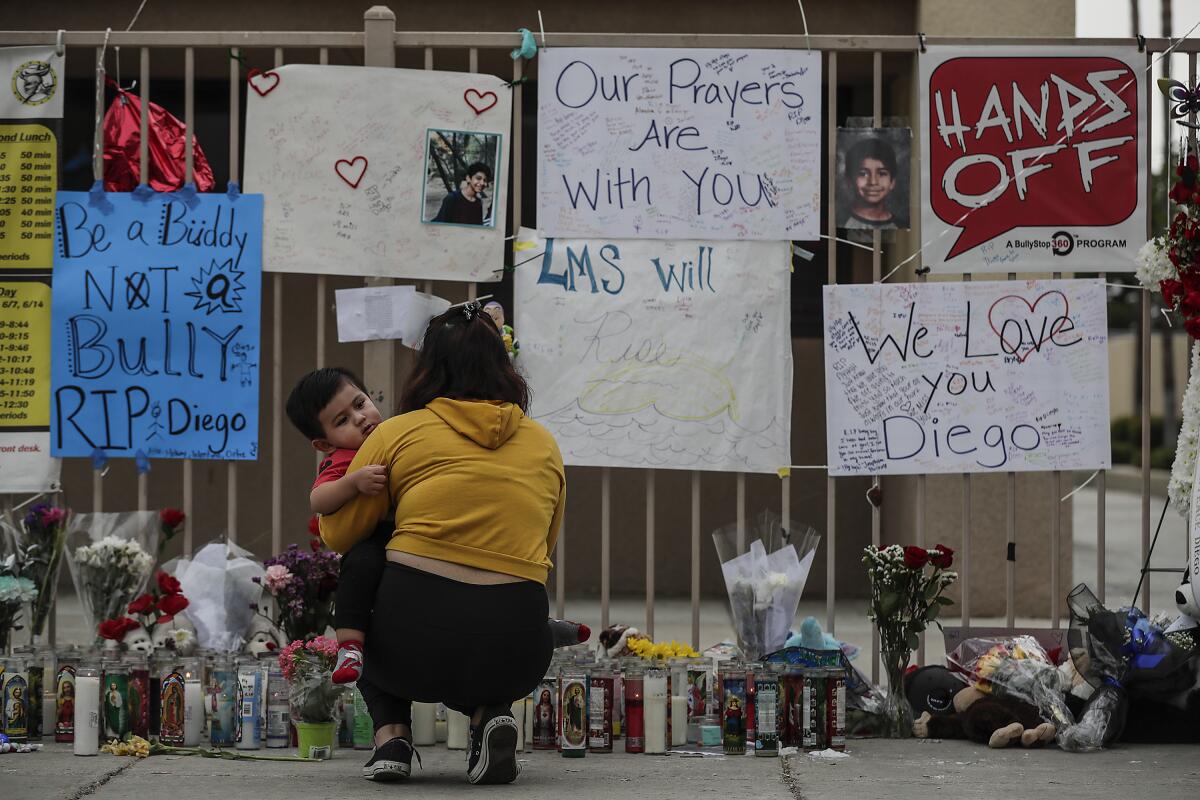Opinion: School bullying has become more elaborate during the pandemic. Parents should be prepared

- Share via
Getting back together with friends in person was one of the main reasons students were excited to return to school after the pandemic lockdowns eased. But not all the returning children were happy to see their classmates.
Although the country’s shift to online education had many shortcomings and resulted in learning loss for far too many students, it also had some upsides, one of which was keeping kids away from bullies. Some children could even improve their grades because they didn’t need to worry about facing their aggressors five days a week and could finally concentrate on their studies. As schools reopened, more and more news about bullying (and even suicides resulting from bullying) appeared all across the country.
In California, where around 60% of elementary school students and 40% of secondary school students returned to in-person learning, specialists have seen an increased number of children in therapy because of bullying. Teachers who work with preschoolers shared that kids have become more aggressive and less capable of controlling their anger after coming back to the classroom. This might be the impact of pandemic trauma — being in isolation, experiencing the loss of relatives, and fear of getting COVID.
Granted, the lockdowns didn’t help schoolchildren escape bullying completely. Instead of cafeterias, hallways and playgrounds, the main bullying territory was the internet. L1ght, a startup focusing on detecting and reducing online toxicity, found that hate speech between kids and teens online increased 70% in just a few months after schools were closed due to the pandemic. In Europe, 44% of the 10- to 18-year-olds who faced online bullying before the pandemic confessed that they were cyberbullied even more during the lockdown, according to the European Commission’s Joint Research Centre report.
Lynda E. Bailey, executive director at Riverside Medical Clinic Charitable Foundation/Anti-Bullying Institute, thinks that children got engaged in cyberbullying because they got bored while stuck inside, and their parents couldn’t supervise them enough because they were busy working from home. Cyberbullying, which may include hurtful comments, rumors spread online and threats, is bad enough. Now that offenders have mastered social media, there is a risk that they might start menacing their victims both online and in person after returning to school.
Schools should continue to teach children how to be more empathetic to others, given that many families are going through their own difficult circumstances due to the pandemic. But counting only on teachers in this situation may not be a good idea, knowing that they are overwhelmed. A year of online learning has left many of them feeling burned out. On top of that, now they are expected to recognize the mental health effects of COVID in students and respond to them. Among all other responsibilities, they might not notice the signs of bullying in the classroom.
So it is important for parents to learn more about symptoms of bullying to be ready to help their children. Now that more students are expected to head back to the classrooms in the fall, it is the right time for parents to talk to their kids about the signs of bullying online and offline and let them know that they are supported. It is crucial to document all the online aggression and to report bullying to school and law enforcement if the situation escalates. Also, it is important not to forget that bullies need help as well, as they hurt others for a reason.
More to Read
A cure for the common opinion
Get thought-provoking perspectives with our weekly newsletter.
You may occasionally receive promotional content from the Los Angeles Times.










